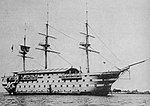Manchester station (MBTA)
Former Boston and Maine Railroad stationsMBTA Commuter Rail stations in Essex County, MassachusettsManchester-by-the-Sea, MassachusettsMassachusetts railway station stubsPages with no open date in Infobox station

Manchester station (signed as Manchester by the Sea) is an MBTA Commuter Rail Newburyport/Rockport Line station in Manchester-by-the-Sea, Massachusetts. The station is accessible, with mini-high platforms at the outbound end of the platform.
Excerpt from the Wikipedia article Manchester station (MBTA) (License: CC BY-SA 3.0, Authors, Images).Manchester station (MBTA)
Summer Street,
Geographical coordinates (GPS) Address Nearby Places Show on map
Geographical coordinates (GPS)
| Latitude | Longitude |
|---|---|
| N 42.574 ° | E -70.7691 ° |
Address
Summer Street
01944
Massachusetts, United States
Open on Google Maps





